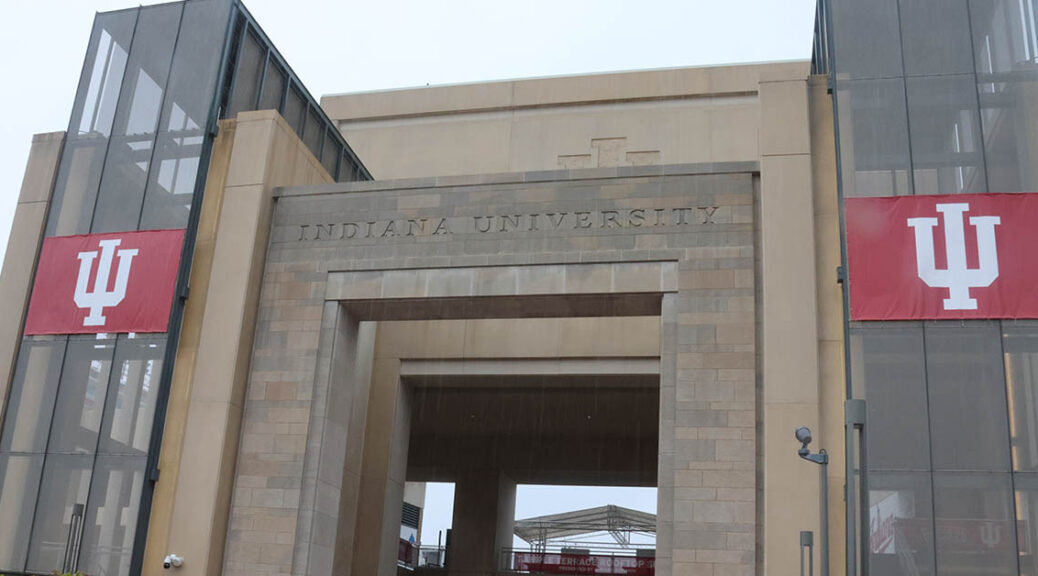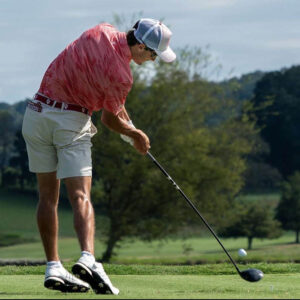
Not All Student Athletes Benefit from NIL
By Ali Brown, Stella Klaus, Michael McGrew and Jolie Goldstein

BLOOMINGTON, Ind. (Nov. 5, 2024) – The air was finally beginning to warm up after a rough transition into spring and the campus almost felt deserted, with no students making their way to classes. After the spring semester had wrapped up at Ball State University and students went home for the summer, Alec Cesare suddenly found himself no longer enrolled in his school or his sport. His first collegiate golf season was not what he had hoped it would be, so Cesare decided it was time for a change. He knew he wanted to stay in the state, but still the challenge of finding a new school was daunting. After an abundance of research, visits and practices Cesare finally decided on his next destination: Indiana University.
Name, Image and Likeness (NIL) started at the very beginning of collegiate athletics with a boat race between Harvard and Yale that was sponsored by a railroad executive to promote train travel to lake Winnipesaukee in 1852. At the beginning with no governing body regulating college athletics and not very many rules, payments of many different kinds to college athletes happened.
The rise in popularity of football created lots of revenue. They would offer compensation to talented athletes which led to athletes jumping around to different colleges depending on which ones would pay them more. The sport of Football became increasingly more popular and dangerous, so Theodore Roosevelt met with colleges to review rules and from that meeting the National Collegiate Athletic Association (NCAA) was created to make the sport safer.
Once it was created the NCAA advised against compensating college athletes. However, they found that this was still happening since football was a highly profitable sport. In 1948 the NCAA decided to do more than advise against it; they adopted a code that reiterated their opposition to payment of student athletes. Through the years the NCAA molded and formed new rules about scholarships and how much they can give athletes for being on their team. The rules of NIL are still being challenged to this day.

One of the biggest complaints about the structure of NIL is the vast difference in income between smaller, less-viewed sports and the larger, more popular sports. Alec Cesare, a sophomore golf player, has experienced this firsthand.
“We spend the same amount of hours practicing, competing and representing the university,” Cesare said. “I think we deserve the same opportunities even though we don’t bring in as much revenue as they do.”
Financially this gap makes sense, the larger sports attract more views and in turn generate more revenue. However, smaller-sport athletes, like Cesare and his teammates, don’t benefit from this, and are expected to spend most of their free time dedicated to their sport without any compensation.
While smaller sports may never get the same amount of money through NIL as sports like Football, NIL still impacted Cesare’s decision when he was transferring schools. He did not get NIL money at Ball State, but at a bigger school there are more opportunities.
“I knew if I went bigger there would be higher chances to get more money,” Cesare said. “The difference between mid-major D1 schools and Power 4 schools is crazy, especially when it comes to money.”
Even with the large difference in sums of money, Cesare still voiced his complaints about the large deficit of money from sport to sport.
“There is a lot of hypocrisy, a lack of clarity and a lack of consistency in a lot of what we’re seeing in these proposed settlements,” Dr. Galen Clavio, Director of the National Sports Journalism Center, said.

The lack of consistency is the same thing that many athletes are frustrated with. This difference in revenue between larger and smaller sports is creating a divide amongst athletes.
“You’re never going to have a job where your coworker gets paid more and you don’t think you deserve to get paid more than them,” Jeremy Gray, Senior Associate Athletic Director for Strategic Communications, said.
There are many different attitudes between experts on how NIL should work and how much athletes should get paid, that is why it is such an ongoing topic that has changed a lot through the years. However, smaller sports don’t make as much NIL money as more popular sports because they don’t get as much TV time, they get less advertising (billboards, posters, merchandise, etc.), they can’t ask brands for sponsorships because of the lack of TV time and they don’t get as much emotional support compared to other sports.
NIL continues to be a popular topic of discussion in collegiate athletics, and that is not going to stop anytime soon. Smaller sports will continue to make far less revenue than more popular sports, despite efforts from smaller sport athletes. Although there are many different facets of NIL that can be dissected, the deficit of funding between large and small sports is one of the most important to discuss to ensure all athletes are being treated fairly under NIL regulations.
People on the streets of Bloomington share their opinions on NIL. Due to the recent supreme court case NCAA v. Alston NIL has been a growing topic with new opinions arising.
###

